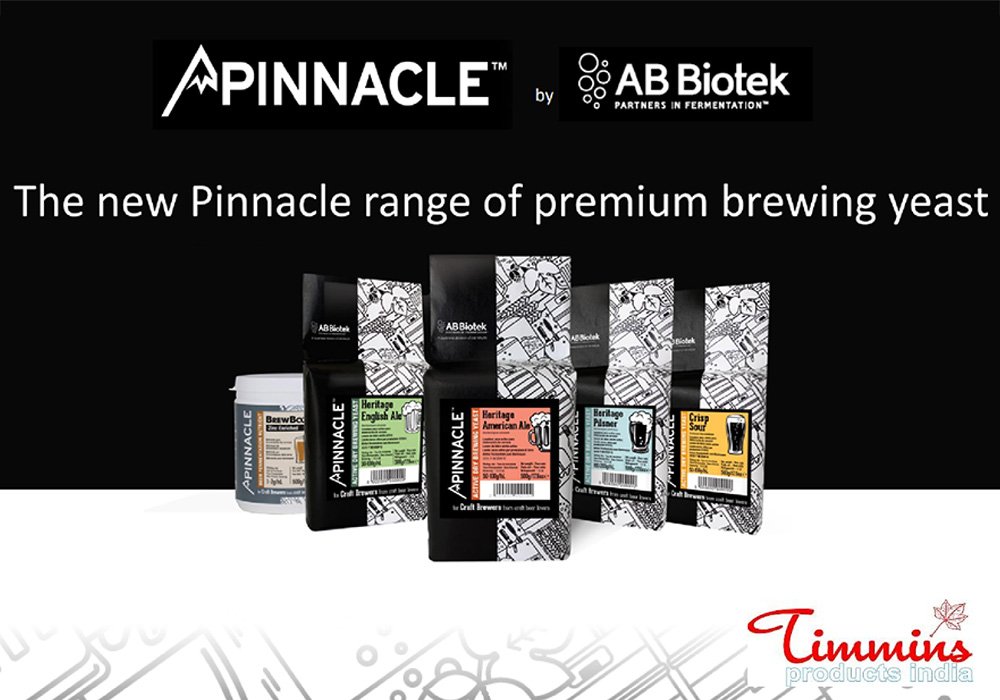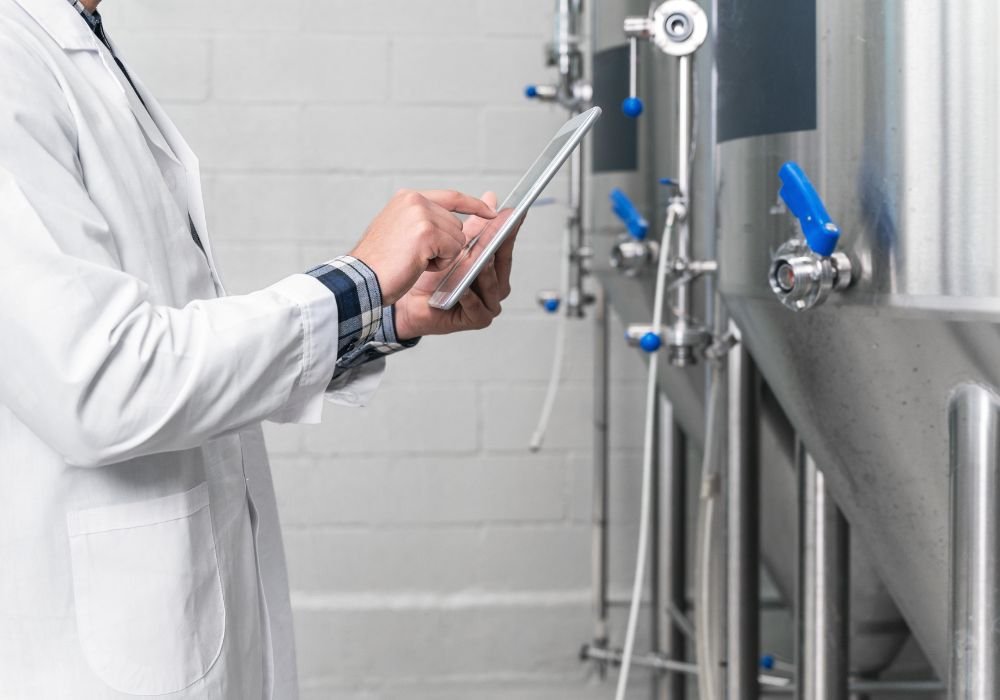
Ankur Jain & Shobhan Roy
All India Brewers’ Association
Working Paper, April 2020
Executive Summary
Beer and alcohol taxes generate nearly 30% of the overall revenue of several states. In an environment where GST collections continue to weaken and are expected to drop further, this contribution of alcohol taxes to the states’ revenue is expected to exceed to more than half (50%). The total revenue generated from the sale of beer and alcohol is INR 2.0 lac crore for states which is larger than the size of the Covid-19 relief package announced by the Government of India on March 26th 2020. As demands for disaster relief and healthcare expenditure increases on States due to lockdown impact of Covid-19, it is imperative that States open beer and alcoholic beverages, immediately, to improve revenue collections.
Unlike gutkha, tobacco and cigarettes which are sold in public spaces by millions of unregulated street vendors, beer and alcohol is sold exclusively in government licensed outlets. These outlets are heavily regulated, have infrastructure and in some cases are also run by the State governments. It is relatively easy to maintain social distancing norms and operate beer and spiritous alcoholic beverages stores in a manner which is fully compliant with the Government’s Covid-19 guidelines. Also, as stipulated by the Ministry of Home Affairs in their guidelines dated April 20, 2020, consumption of alcohol in public spaces is already banned by State Excise even before Covid-19. Therefore, the MHA should differentiate between gutkha and alcoholic beverages and allow for their sale through licensed outlets while restricting consumption in public spaces.
The State Governments can also protect their revenue by allowing licensed retailers to sell via home-delivery and provide licenses to e-commerce players to sell beer and wine online.
To our mind, the ease of opening the beer and alcobev trade in compliance with social distancing norms, combined with the disproportionate revenue potential for the States make it a very compelling case to remove restrictions and restart the trade immediately.
Beer in India
Beer and alcoholic beverages are the largest consumer product categories in the country. Combined, they contribute to nearly INR 200,000 Crores ($33b) of State Revenue from sales in India annually. This translates to nearly 1.5% of the country’s GDP and is larger than the size of the pharmaceutical industry in India. By comparison, biscuits, which is often claimed to be the largest packaged foods category in India, is at $5b1 in annual sales. Packaged snacks (such as Haldiram etc) are at $4b2 in annual sales. Most other large consumer categories are also a fraction of the sales of alcoholic beverages. For example, carbonated soft drinks (led by Coca-Cola, Pepsi and other regional brands) are at $5b of sales annually in the country. Other beverages such as packaged fruit juices are $250m 3 in annual sales. Confectionary is at $4b4 and within that branded chocolates are at $1b in annual sales. The packaged noodles market (Maggi etc) is at $750m5 in annual sales.
Within the category of alcoholic beverages, beer and spirits dominate. Of the INR 250,000 Cr ($33b) in sales, beer contributes to nearly INR 56,000 Crores ($7.5b) in annual sales. Spirits and country liquor make up nearly $24b with wine and Ready-to-drink (RTD) beverages responsible for the balance.
The beer trade starts its economic value-addition at the farm and goes all the way to the consumer.
The beer industry produces over 330 million cases (each case of 7.8 L) of beer annually in nearly 90 medium to large scale breweries and over 200 small-scale microbreweries. Over 99% of beer in the country is produced in medium scale production facilities that package beers in bottles, cans and kegs to be sold through bars, restaurants and retail shops. These breweries collectively employ over 300,000 people directly to produce and sell beers.
Beer production has a direct and a very intricate linkage with the farmers of the country. The primary ingredients in the manufacture of beer is grains such as barley, rice, wheat and sugar cane. The beer industry procures over 750,000 MT of agricultural produce annually in making its products, directly supporting over 2,000,000 rural households annually.
The beer industry has deployed over INR 7000 crores (~$1b) in capex over the last five years most of it in plant, machinery and factory construction. Most of this capital purchases are done with contractors and manufacturers who have a local manufacturing base in the country furthering the Government’s “Make in India” initiatives.
The industry procures over 500,000 MT of glass annually from the country’s glass manufacturers annually (20% of their annual capacity). The beer industry is also a major buyer of aluminium cans procuring over 1 billion units annually (75% of the cans manufactured in the country). Additionally, the beer industry supports a very large number of micro, small and medium scale enterprises in the country, procuring items such as corrugated cartons, crown caps, printed labels and other packaging materials from numerous local suppliers.
Additionally, the beer industry supply chain is a major source of revenue for the country’s truckers and freight companies responsible for over 1.5 million truckloads annually. Many of these trucks are operated by small companies with a local footprint or even by individual truck owners who are self-employed. In addition beer companies employ the services of myriad service providers from housekeeping, to and collectively employ over 2.5 million of semi-skilled people in their establishments.
It is estimated that the beer industry and alcohol industry is directly or indirectly responsible for over 5 million jobs in India – many of them for daily wage workers and rural farm workers.
Beer and Alcohol likely to contribute to nearly 50% of some States Revenues.
The beer and alcohol industry have an even more disproportionate impact when it comes to the Government’s revenues. Nearly 70% of the annual sales for beer and alcohol is collected State Governments in the form of various duties and taxes. This translates to nearly INR 200,000 Crores ($26b+) annually. For context, the economic relief package announced by the Hon’ble Finance Minister for Covid-19 on March 26, 2020 was for a total of INR 170,000 Crores.
An additional INR 20000 Crores is collected by Central Government because of GST on Inputs to the Industry and Custom Duties on Imports with no set off.
By contrast, most other packaged food and beverage products contribute between 10-15% of their annual sales in tax revenues for the Government. For example, the biscuit or the soft drinks industry contributes to less than INR 4000 Crores ($750m) each to the Government’s coffers annually primarily in the form of GST.
As a result, beer and alcohol contributed to nearly 35% of States’ revenues in several cases, and on an average about 30%+ of the States’ revenues in 2018. In a scenario where GST collections have been weak and have missed targets over several quarters in 2019 and 2020, the percentage contribution of revenue for states is projected to increase to as much as 50% for FY 21.

This is no small amount and the revenue from beer and alcohol becomes indispensable, especially in the context of increased government spends on disaster relief, safety, healthcare and financial measures required to combat Covid-19.
Opening Breweries – Beer Manufacturing Units in the Country
The manufacture of beer is a continuous process. It is one of the only packaged products that starts at the very basic raw material – grains from the farms. These grains are fermented and lagered over a two week period in large tanks and then packed into glass bottles, cans or kegs. Over 99% of the beer produced in the country is made in 83 medium-to-large scale industrial facilities. These breweries operate with a high degree of automation and quality control to ensure that the product is consistent throughout batches. What is also unique about industrial breweries in India is the sustainability of beer production. In India, by law, all large breweries are expected to be zero discharge plants – meaning that all water utilized is recycled and treated, and none is discharged to the water table. A lot of breweries have already installed solar cells to derive part of their energy from renewable sources, and recycle almost a 100% of CO2 generated in the brewing process.
The easiest way to restart business is to allow manufacture from these 83 facilities. The current circular issued by the Ministry of Home Affairs (MHA) dated April 20, 2020 restricts the sale of alcohol in public spaces. However, in the same circular, the MHA explicitly allows and in fact encourages restart of industrial activities in both rural areas and industrial parks, especially for food and beverages. It is important for all State Governments to take a consistent and accurate reading of the MHA circular and instruct on a reopening of breweries which is also consistent with the circular. Most of the key suppliers for beer including bottle manufacturers, can manufactures, malting companies and packaging material suppliers are shared with other packaged food & beverage manufacturers and already have permissions to operate.
Further, given the scale and sophistication of infrastructure, the breweries are either already ready or can easily be made ready to comply with social distancing norms, have heightened health monitoring and support for staff once they swing into operations.
Opening the Trade in the Country
The Government has already allowed shops selling essential commodities and pharmacies to be opened. There are over 12 million FMCG outlets in the country. The number of pharmacies in the country is over 1.5 million. These stores have been operational and by all accounts, pharmacies and grocery stores have been able to adapt to social distancing norms and are providing great service to our citizens.
Unlike gutkha, tobacco and cigarettes which are sold in public spaces by millions of unregulated street vendors, beer and alcohol is sold exclusively in government licensed outlets. These outlets are heavily regulated. All outlets allowed to sell beer and alcohol are explicitly licensed by State Excise departments, in addition to registration under the Shops & Establishments Act. Under the State Excise norms, these stores are required to fulfil certain basic criteria such as storage conditions and fire safety norms amongst others which in many cases are more stringent than the requirements of the Shops & Establishments Act. These outlets have the infrastructure and in some cases are even run by the State governments themselves. It is relatively easy to maintain social distancing norms and operate beer and alcobev stores in a manner which is fully compliant with the Government’s Covid-19 guidelines.
Also, as stipulated by the Ministry of Home Affairs in their guidelines dated April 20, 2020, consumption of alcohol in public spaces is already banned by State Excise even before Covid-19. Therefore, MHA should differentiate between gutkha and alcoholic beverages and allow for their sale through licensed outlets while restricting consumption in public spaces.
Given revenue pressures, a lot of states are already willing to open beer and alcohol stores. A relaxation by MHA on this area would go a long way in enabling a restart of a very important revenue source for states. Opening of beer and alcohol stores in the country will result in a restart of a revenue stream for states that could account for nearly 50% of their revenues is a no-brainer.
Now is the Time to Permit Home Delivery and E-commerce for Beer
Covid-19 has the potential to disrupt business for the rest of the year. Several epidemiologists predict that the pandemic will come in multiple waves. Given the threat of infection resurfacing in one part of the country or the other, this will lead to multiple lockdowns and disruptions for business. In this environment, it is imperative that the state excise departments introduce policies that facilitate home delivery of beer, wine and alcohol. This could be done at multiple levels,
- Allowing currently licensed retailers and wholesalers to deliver product at home with proper age verification on their own;
- Creating a special license for private e-commerce companies (such as Flipkart, Amazon, Grofers and others) and food delivery companies (such as Zomato, Swiggy and others) to take orders and fulfil demand from the existing licensed retailers and wholesalers in states; and,
- Creating a state excise owned online ordering platform, especially in corporation markets, where orders by consumers can be placed on an official State excise mandated platform and in-turn fulfilled by State Excise in partnership with home delivery companies
One key factor for the success of online delivery and also a potential source of risk is compliance with age norms. With mobile based ordering, where consumers can be authenticated at the time of ordering and receipt through the Aadhar digital identity system, there are available technological solutions that can be deployed relatively quickly to ensure that the system is fool proof and all consumers who are able to order or receive product satisfy the states laws and regulations on under-age consumption. This technology-based approach may in fact improve compliance of such rules even when compared to off-line stores. Additionally, e-commerce and home delivery also reduce the risks associated with drinking and driving and can drive up safety considerably.
Conclusion
Beer and alcohol taxes generate nearly 30% of the overall revenue of several states. In an environment where GST collections continue to weaken and are expected to drop further, this contribution of alcohol taxes to the states’ revenue is expected to exceed to more than half (50%). The total revenue generated from the sale of beer and alcohol is INR 2.0 L Crores, which is almost equal to the size of the relief package announced by the Government of India on March 26th 2020. As demands for disaster relief and healthcare expenditure increases on States due to lockdown impact of Covid-19, it is imperative that States open beer and alcoholic beverages, immediately, to improve revenue collections.
Unlike gutkha, tobacco and cigarettes which are sold in public spaces by millions of unregulated street vendors, beer and alcohol is sold exclusively in government licensed outlets. These outlets are heavily regulated, have infrastructure and in some cases are also run by the State governments. It is relatively easy to maintain social distancing norms and operate beer and alcobev stores in a manner which is fully compliant with the Government’s Covid-19 guidelines. Also, as stipulated by the Ministry of Home Affairs in their guidelines dated April 20, 2020, consumption of alcohol in public spaces is already banned by State Excise even before Covid-19. Therefore, the MHA should differentiate between gutkha and alcoholic beverages and allow for their sale through licensed outlets while restricting consumption in public spaces.
The State Governments can also protect their revenue by allowing licensed retailers to sell via home-delivery and provide licenses to e-commerce players to sell beer and wine online.
To our mind, the ease of opening the beer and alcobev trade in compliance with social distancing norms, combined with the disproportionate revenue potential for the States make it a very compelling case to remove restrictions and restart the trade immediately.
References:
Source: The Communication Council













